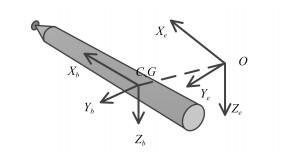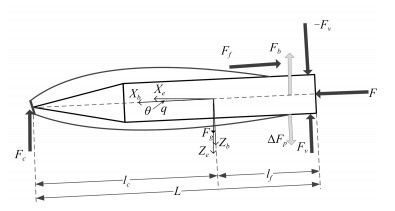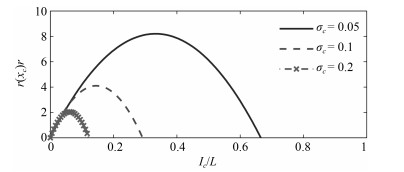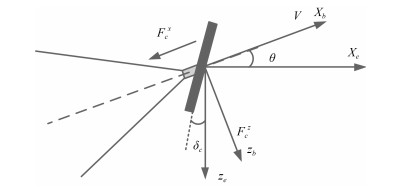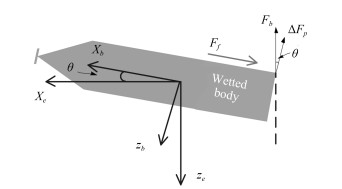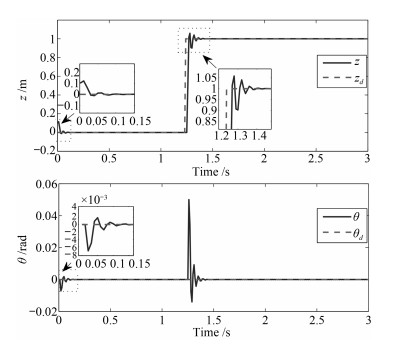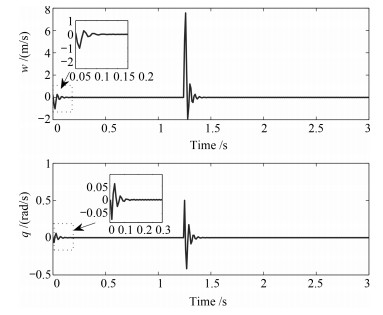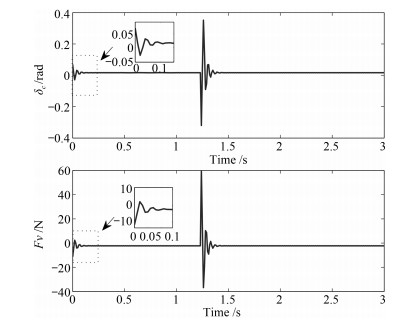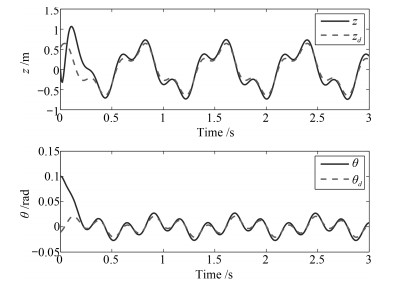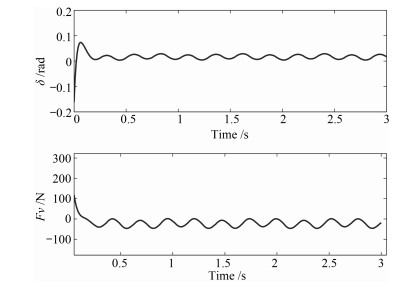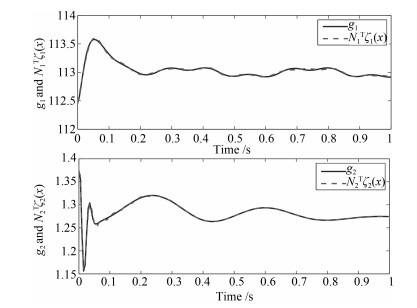|
[1]
|
Kirschner I N, Kring D C, Stokes A W, Fine N E, Uhlman Jr J S. Control strategies for supercavitating vehicles. Journal of Vibration and Control, 2002, 8(2): 219-242 http://d.old.wanfangdata.com.cn/OAPaper/oai_doaj-articles_f7aa13c4006388f458982fd8c3d1525b
|
|
[2]
|
Savchenko Y N. Investigation of high speed supercavitating underwater motion of bodies, High-speed motion in water, AGARD Report 827, 20-1-20-12, NASA 19980020552. NASA, USA, 1998.
|
|
[3]
|
Vanek B, Bokor J, Balas G. High-speed supercavitation vehicle control. In: Proceedings of AIAA Guidance, Navigation, and Control Conference and Exhibit. Keystone, CO, USA: AIAA, 2006.
|
|
[4]
|
Dzielski J, Kurdila A. A benchmark control problem for supercavitating vehicles and an initial investigation of solutions. Journal of Vibration and Control, 2003, 9(7): 791- 804 doi: 10.1177/1077546303009007004
|
|
[5]
|
Mao X F, Wang Q. Nonlinear control design for a supercavitating vehicle. IEEE Transactions on Control Systems Technology, 2009, 17(4): 816-832 doi: 10.1109/TCST.2009.2013338
|
|
[6]
|
Mao X F, Wang Q. Adaptive control design for a supercavitating vehicle model based on fin force parameter estimation. Journal of Vibration and Control, 2015, 21(6): 1220-1233 doi: 10.1177/1077546313496263
|
|
[7]
|
Li D J, Luo K, Huang C, Dang J J, Zhang Y W. Dynamics model and control of high-speed supercavitating vehicles incorporated with time-delay. International Journal of Nonlinear Sciences and Numerical Simulation, 2014, 15(3-4): 221-230 http://www.wanfangdata.com.cn/details/detail.do?_type=perio&id=ijnsns-2013-0063
|
|
[8]
|
Kawakami E, Arndt R E A. Investigation of the behavior of ventilated supercavities. Journal of Fluids Engineering, 2011, 133(9): Article No.091305
|
|
[9]
|
Sanabria D E, Balas G, Arndt R. Modeling, control, and experimental validation of a high-speed supercavitating vehicle. IEEE Journal of Oceanic Engineering, 2015, 40(2): 362-373 doi: 10.1109/JOE.2014.2312591
|
|
[10]
|
Yuan X L, Xing T. Hydrodynamic characteristics of a supercavitating vehicle's aft body. Ocean Engineering, 2016, 114: 37-46 doi: 10.1016/j.oceaneng.2016.01.012
|
|
[11]
|
Kim S, Kim N. Neural network-based adaptive control for a supercavitating vehicle in transition phase. Journal of Marine Science and Technology, 2015, 20(3): 454-466 doi: 10.1007/s00773-014-0298-6
|
|
[12]
|
Liu J K. Radial Basis Function (RBF) Neural Network Control for Mechanical Systems: Design, Analysis and Matlab Simulation. Berlin Heidelberg: Springer, 2013.
|
|
[13]
|
Park B S, Kwon J W, Kim H. Neural network-based output feedback control for reference tracking of underactuated surface vessels. Automatica, 2017, 77: 353-359 doi: 10.1016/j.automatica.2016.11.024
|
|
[14]
|
Wang T, Gao H J, Qiu J B. A combined adaptive neural network and nonlinear model predictive control for multirate networked industrial process control. IEEE Transactions on Neural Networks and Learning Systems, 2016, 27(2): 416-425 doi: 10.1109/TNNLS.2015.2411671
|
|
[15]
|
He W, Chen Y H, Yin Z. Adaptive neural network control of an uncertain robot with full-state constraints. IEEE Transactions on Cybernetics, 2016, 46(3): 620-629 doi: 10.1109/TCYB.2015.2411285
|
|
[16]
|
Sun C Y, He W, Ge W L, Chang C. Adaptive neural network control of biped robots. IEEE Transactions on Systems, Man, and Cybernetics: Systems, 2017, 47(2): 315-326
|
|
[17]
|
Sun T R, Pei H L, Pan Y P, Zhou H B, Zhang C H. Neural network-based sliding mode adaptive control for robot manipulators. Neurocomputing, 2011, 74(14-15): 2377-2384 doi: 10.1016/j.neucom.2011.03.015
|
|
[18]
|
Liu D R, Wang D, Zhao D B, Wei Q L, Jin N. Neural-network-based optimal control for a class of unknown discrete-time nonlinear systems using globalized dual heuristic programming. IEEE Transactions on Automation Science and Engineering, 2012, 9(3): 628-634 doi: 10.1109/TASE.2012.2198057
|
|
[19]
|
Li Y H, Qiang S, Zhuang X Y, Kaynak O. Robust and adaptive backstepping control for nonlinear systems using RBF neural networks. IEEE Transactions on Neural Networks, 2004, 15(3): 693-701 doi: 10.1109/TNN.2004.826215
|
|
[20]
|
Kwan C, Lewis F L. Robust backstepping control of nonlinear systems using neural networks. IEEE Transactions on Systems, Man, and Cybernetics — Part A: Systems and Humans, 2000, 30(6): 753-766 doi: 10.1109/3468.895898
|
|
[21]
|
Zhang T, Ge S S, Hang C C. Adaptive neural network control for strict-feedback nonlinear systems using backstepping design. Automatica, 2000, 36(12): 1835-1846 doi: 10.1016/S0005-1098(00)00116-3
|
|
[22]
|
Peng X G, Wu Y P. Large-scale cooperative co-evolution using niching-based multi-modal optimization and adaptive fast clustering. Swarm and Evolutionary Computation, 2017, 35: 65-77 doi: 10.1016/j.swevo.2017.03.001
|
|
[23]
|
Vanek B, Bokor J, Balas G J, Arndt R E A. Longitudinal motion control of a high-speed supercavitation vehicle. Journal of Vibration and Control, 2007, 13(2): 159-184 doi: 10.1177/1077546307070226
|
|
[24]
|
Peng X G, Liu K, Jin Y C. A dynamic optimization approach to the design of cooperative co-evolutionary algorithms. Knowledge-Based Systems, 2016, 109: 174-186 doi: 10.1016/j.knosys.2016.07.001
|
 百度学术
百度学术 百度学术
百度学术 百度学术
百度学术 百度学术
百度学术 百度学术
百度学术 百度学术
百度学术 百度学术
百度学术 百度学术
百度学术 百度学术
百度学术 百度学术
百度学术 百度学术
百度学术 本站查看
本站查看 本站查看
本站查看 百度学术
百度学术 百度学术
百度学术 百度学术
百度学术 百度学术
百度学术 百度学术
百度学术 百度学术
百度学术 百度学术
百度学术 百度学术
百度学术 百度学术
百度学术 百度学术
百度学术 百度学术
百度学术 百度学术
百度学术 百度学术
百度学术 百度学术
百度学术 百度学术
百度学术 百度学术
百度学术





 下载:
下载:
